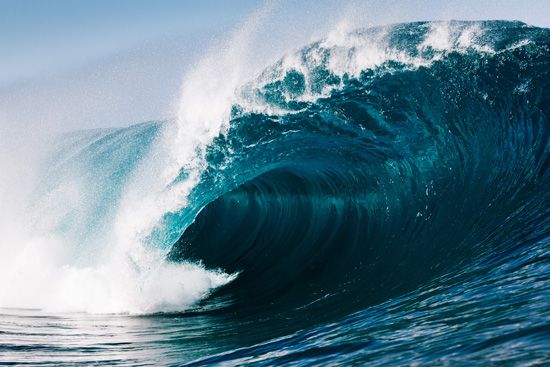
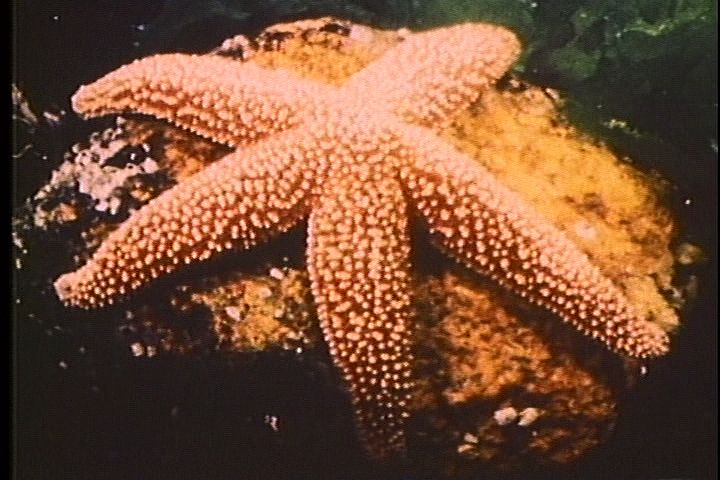 An
An  ocean is a huge body of salt water. Oceans cover nearly 71 percent of Earth’s surface. They contain almost 98 percent of all the water on Earth.
ocean is a huge body of salt water. Oceans cover nearly 71 percent of Earth’s surface. They contain almost 98 percent of all the water on Earth.
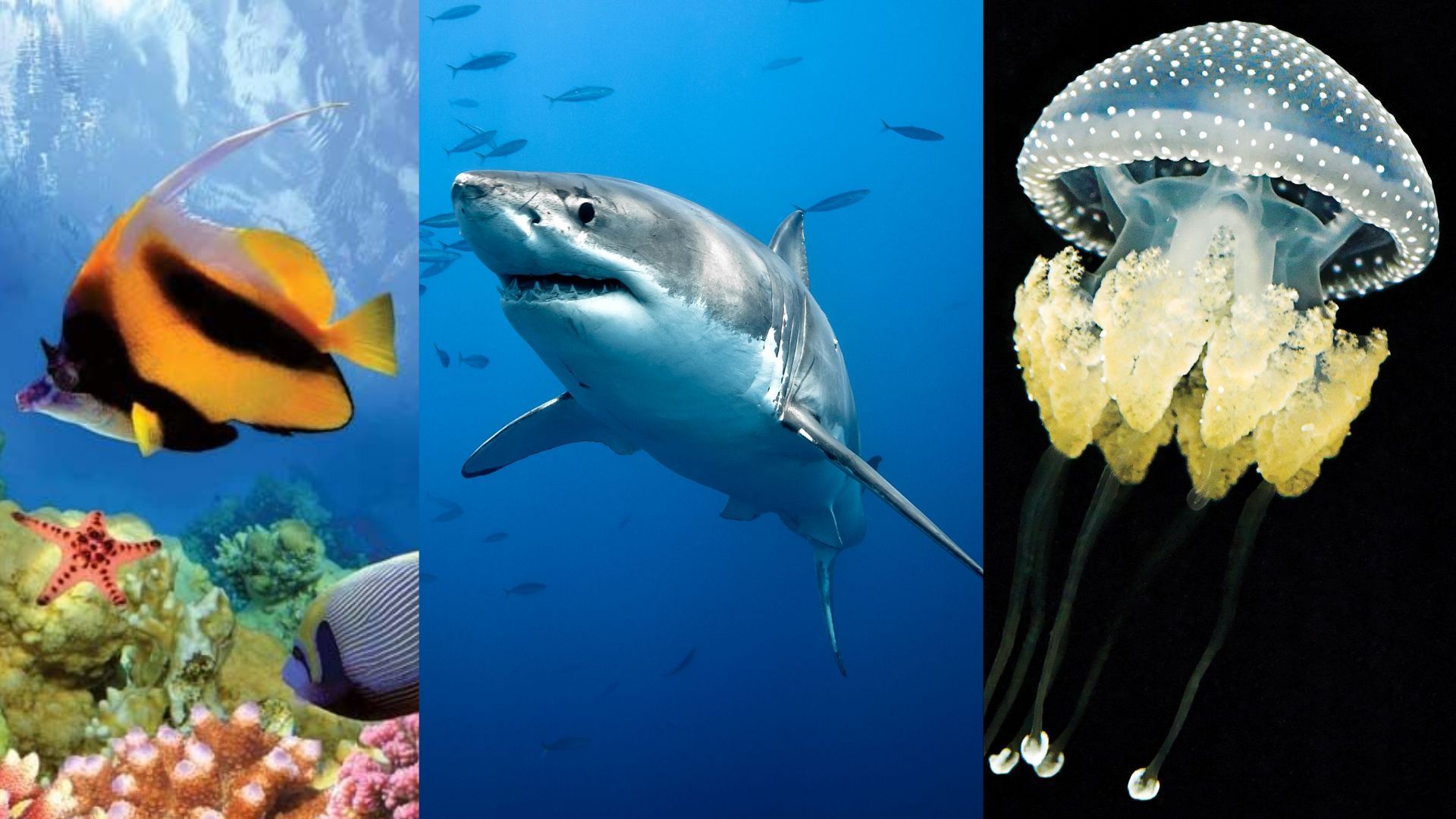
Ocean water is salty. The saltiness comes from a chemical substance called sodium chloride, which is dissolved in the water. (The salt that people eat is sodium chloride in the form of crystals.)
Winds and other forces cause ocean water to be constantly in motion. Large amounts of ocean water move around Earth in patterns called currents. Ocean currents may be warm or cold. Warm currents tend to bring warm weather and rain to nearby land. Cold currents tend to cause a dry climate. The Gulf Stream is a warm current that runs north along the eastern coast of the United States.
Winds also cause ocean water to move in waves. Steady, powerful winds cause big waves. Gentle breezes create ripples. Large swells in ocean water usually come from stormy weather.
Tides are another way that ocean water moves. Tides are the rise and fall of ocean levels. That happens throughout the day. On a beach, for example, the ocean covers more sand at high tide than at low tide. The pull of a force called gravity between Earth and the Moon and the Sun causes tides.
The ocean floor has many levels. The shallowest part of the oceans, called the continental shelf, lies along the edges of the continents. The edges of the continental shelf slope down toward the deep parts of the oceans, called the basins. At the bottom of the basins are large, flat plains.
In some places, deep cracks called trenches cut into the ocean floor. In other places, underwater mountain chains, called oceanic ridges, rise up from the floor. Earthquakes sometimes occur along the trenches and ridges. Parts of the ridges contain active volcanoes.
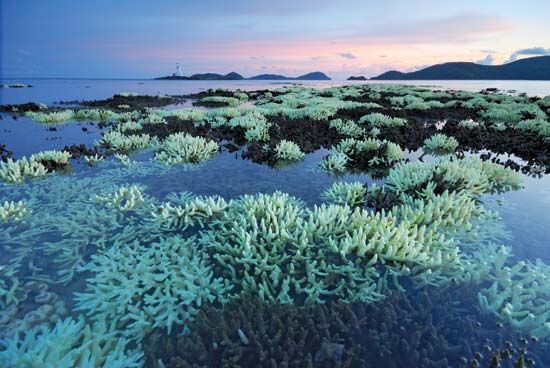
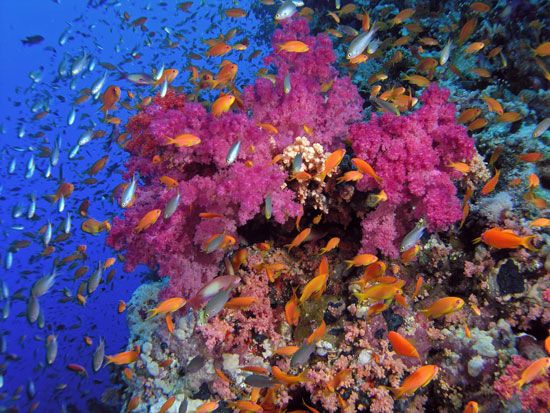 Living things inhabit all levels of Earth’s oceans. Ocean plants grow fairly close to the water’s surface because they need sunlight to stay alive. Sunlight penetrates the water to only about 656 feet (200 meters). The most numerous ocean plants are called phytoplankton. Those tiny, one-celled plants drift with the ocean currents. Various kinds of sea grass and other plants also grow in the world’s oceans. Seaweeds, which are plantlike forms of algae, are plentiful as well.
Living things inhabit all levels of Earth’s oceans. Ocean plants grow fairly close to the water’s surface because they need sunlight to stay alive. Sunlight penetrates the water to only about 656 feet (200 meters). The most numerous ocean plants are called phytoplankton. Those tiny, one-celled plants drift with the ocean currents. Various kinds of sea grass and other plants also grow in the world’s oceans. Seaweeds, which are plantlike forms of algae, are plentiful as well.
Like ocean plants, most ocean animals live in shallower water. This is because there are more plants and animals to eat near the water’s surface. But animals also can be found in  deep water, including within the oceans’ deepest, darkest trenches.
deep water, including within the oceans’ deepest, darkest trenches.
The largest ocean animal is the blue whale. No larger animal has ever lived on Earth. The tiniest animals are a form of plankton called zooplankton. Hundreds of thousands of other types of animal also live in the ocean. Those include clams, crabs, squid, dolphins, and many different kinds of fish. Corals and sea anemones look like plants, but they are animals, too.
The world’s oceans are important to life on Earth. Oceans are a great source of food for people around the world. They also provide minerals, oil, and natural gas. Phytoplankton and algae create much of the world’s oxygen. Oceans also help to keep climates stable by storing heat from the Sun.
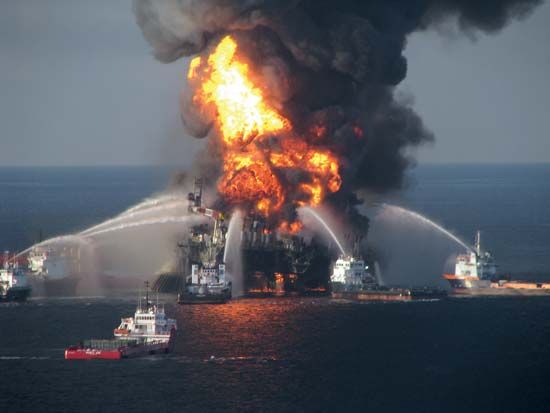 Today, many dangers threaten the health of the oceans. People pollute oceans by dumping poisonous waste and garbage into them. Ocean pollution reduces oxygen in the water and harms ocean life. Overfishing and oil spills harm ocean life as well.
Today, many dangers threaten the health of the oceans. People pollute oceans by dumping poisonous waste and garbage into them. Ocean pollution reduces oxygen in the water and harms ocean life. Overfishing and oil spills harm ocean life as well.
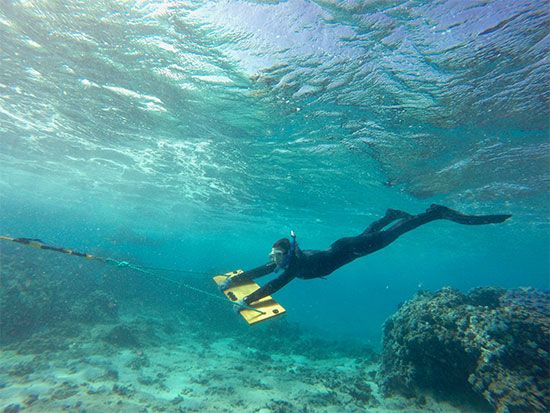 People called oceanographers study the oceans to try to keep them healthy. Some examine the quality of the water and the way the water moves. Others look at the structures of the seafloors and basins. Another group of oceanographers is interested in the plants and animals that live in oceans.
People called oceanographers study the oceans to try to keep them healthy. Some examine the quality of the water and the way the water moves. Others look at the structures of the seafloors and basins. Another group of oceanographers is interested in the plants and animals that live in oceans.




